No products in the cart.
Knee Support Compression Sleeve For Running & Sports
£9.99£12.99 (-23%)inc VAT
- 1 x Knee Support Compression Sleeve by KneeReviver — unisex, low‑bulk support for running, sport and active days
- Sizes: M 31–35 cm, L 36–40 cm, XL 41–45 cm (measure around the centre of your knee for best fit)
- Flexible side stays for gentle, reliable lateral stability without restricting movement
- 3D graduated compression to ease discomfort and help control swelling after activity
- Patella‑support silicone pad to cushion the kneecap and improve comfort when bending
- Anti‑slip grippers to keep the sleeve in place during quicker efforts and direction changes
- Anatomical shaping and four‑way stretch for a smooth fit that moves naturally
- Breathable, moisture‑wicking nylon blend for cooler, drier wear across seasons
- Targeted cushioning at the kneecap and joint line to soften impact on sensitive areas
- Reinforced edging for lasting shape and durability; machine washable (air dry)
- Typical uses: runner’s knee (patellofemoral pain), ITB irritation, patellar/quad tendinopathy, bursitis, meniscal irritation, mild sprains, osteoarthritis
- Use alongside early recovery steps (rest, ice, elevation) when advised; not a substitute for medical care in significant injuries
- 30‑day Comfort & Fit Guarantee
Get 15% off - When bought together with:
- This item: Knee Support Compression Sleeve For Running & Sports(£9.99
£12.99(-23%)inc VAT) - Gel Knee Ice Pack Wrap for Knee Pain Relief(£22.99
£24.99inc VAT)
For runners and athletes, consistent training drives performance—but knee discomfort, whether at the front, inside, outside, or behind the joint, can stop you in your tracks. If you’re keeping active with regular walks or gym sessions, the effect is similar: pain or stiffness knocks confidence and makes it harder to keep your routine. Addressing symptoms early helps you stay moving well.
The Knee Support Compression Sleeve for Running & Sports by KneeReviver offers a practical way to do that. Moderate, well‑placed support helps ease discomfort, manage swelling after activity, and promote smoother, more controlled movement when you pick up speed, change direction, or tackle uneven ground. Lightweight and breathable, it stays put and moves naturally—providing reliable support without bulk.
In the sections below, you’ll find clear explanations of common running and sport‑related knee issues and where a sleeve can help, a detailed look at how this sleeve is built and what that means in use, plus practical guidance on sizing, fit, wear time, and care. A fair 30‑day Comfort & Fit Guarantee and essential health guidance are included to help you decide whether this support is right for you.
Common running and sport‑related knee issues: how a sleeve can help
Below you’ll find the knee problems you’re most likely to meet in running and sport—where you feel them, what’s happening inside the joint, and how a sleeve can provide supportive comfort while you keep moving.
Runner’s knee (patellofemoral pain)
Patellofemoral pain is irritation of tissues around the kneecap as it glides in its groove. The patella acts like a pulley for the quadriceps, so pressure behind it rises with deeper bends and on descents. Discomfort usually reflects increased stress on the back of the kneecap, the bone beneath it, the joint lining, and nearby tendons rather than damage visible on a scan.
Training spikes, extra hills or stairs, or technique that lets the kneecap drift or tilt slightly can raise contact stress. Weakness or fatigue in the quadriceps and hips, or tightness along the outer thigh, can shift pressure to one side. Expect a dull ache around or behind the kneecap, pain on stairs (especially down), after sitting, during squats or lunges, and when running downhill or on hard surfaces. Mild swelling or stiffness that eases as you warm up is common.
A sleeve helps by smoothing how the kneecap meets the groove and settling sensitive tissues. The patella pad spreads pressure so bending feels smoother; compression supports the quadriceps and patellar tendon and can limit minor swelling after activity. Steady contact improves joint awareness (your sense of knee position), which helps you control alignment on step‑downs, landings, and turns, while gentle warmth eases early‑session stiffness.
Wear it for key runs, sport drills, and gym sessions while you scale back the most irritating elements for a short spell (shallower angles, fewer downhills) and add progressive strength for the quadriceps and hips. If pain is unchanged after two to three weeks of these steps, get personalised guidance from a physiotherapist or doctor.
Chondromalacia patellae (under‑kneecap cartilage irritation)
Chondromalacia means the smooth cartilage on the back of your kneecap (patella) is irritated. Normally, this surface glides in the trochlear groove (the groove at the end of your thigh bone) with very low friction as you bend and straighten. Because cartilage has few nerves, discomfort usually comes from the bone just beneath it, the joint lining, and nearby tissues when contact stress rises—especially in deeper knee bends where patellofemoral forces are higher.
Stress typically increases with sudden training spikes (more distance, speed, or hills), a knock to the front of the knee, or movement patterns that let the patella drift slightly off‑centre. Fatigue or weakness in the quadriceps and hips, or tight tissue along the outer thigh, can push pressure onto one side of the kneecap. You may feel a diffuse ache behind or around the kneecap, occasional grinding, and pain with stairs (often down), squats, running downhill, or after long periods of sitting. Mild swelling or stiffness that eases as you warm up is common; true locking or giving way is not.
A knee sleeve can help by evening out contact pressure and calming sensitive tissues while you adjust training. A contoured patella pad spreads load under the kneecap to reduce “hot spots,” while graduated compression supports the surrounding tissues, can limit minor post‑activity swelling, and improves joint awareness so movement feels steadier. Gentle warmth eases first‑steps stiffness, and flexible side stays add subtle side‑to‑side control without restricting motion.
Use the sleeve during activities that usually provoke symptoms—runs on pavement or trails, gym work, longer walks—while you briefly reduce aggravators (shallower bends, fewer hills, smaller jumps) and build strength in the quadriceps and hips. If symptoms don’t settle after a few weeks of these changes, arrange a review with a physiotherapist or doctor. Sudden catching or locking, marked swelling, or new night pain after a twist deserves prompt assessment.
Patellar instability and maltracking
Your kneecap should glide centrally in the trochlear groove, guided by bone shape, soft‑tissue restraints on the inner side of the knee, and balanced quadriceps pull. If the patella tilts or drifts outward—because of a shallow groove, lax tissues, a prior dislocation, or movement habits—pressure shifts to one side and the joint can feel exposed.
Symptoms tend to rise with quick direction changes, deep bends, and downhill running where outward pull increases. You may feel front‑of‑knee pain, a sense of mistracking or slipping, and mild swelling after activity. Some people fear the kneecap “popping” during squats or side‑steps even without a true dislocation.
A sleeve supports comfort and control through gentle patella cupping and subtle lateral guidance. The shaped patella pad spreads contact and encourages a smoother glide without forcing a rigid path. Flexible side stays add light side‑to‑side control during turns and deceleration, while compression sharpens awareness of knee position so movements feel steadier. Anti‑slip grippers help keep the pad aligned through longer sessions.
Use the sleeve for running, agility work, and gym training while you limit provocative depths briefly (shallower squats, controlled step‑downs) and strengthen the quadriceps and hips that help centre the patella. If you’ve had a full dislocation before, or the knee keeps slipping despite these changes, a clinician can advise on targeted rehab and whether bracing is appropriate.
Hoffa’s fat pad irritation (infrapatellar fat pad)
The infrapatellar fat pad sits beneath the kneecap and in front of the joint. It is rich in nerves and blood vessels, cushions the area, and helps fill space as the knee moves. It can be pinched between the patella and femur when the knee is locked straight (hyperextended) or as it moves from straight to slightly bent, and once irritated it can stay reactive if repeatedly compressed.
Typical triggers include frequent downhill running, forceful kicks, repeated end‑range straightening, or a direct knock to the front of the knee. Pain is often sharp or burning at the lower front of the knee, either side of the patellar tendon, and may worsen if you try to lock the knee straight. Standing with the knee “pushed back” and bumps to the front of the knee can keep symptoms active.
A sleeve helps by adding a gentle front‑of‑knee cushion and steady pressure that calms the fat pad and nearby tissues. The patella pad spreads contact across a broader area so focal pinching is less likely, while compression can limit minor reactive swelling and improves your sense of position so you naturally avoid locked‑back standing. The warm, supported feel makes mid‑range motion more comfortable and discourages the end ranges that irritate the area.
Use the sleeve for runs, brisk walks, and gym sessions while you shorten downhill strides, keep a soft knee when standing, and strengthen the quadriceps and hips to improve limb control. If straightening remains painful or the front of the knee becomes hot and puffy after a knock, get it checked!
Synovial plica syndrome
A plica is a small fold in the knee’s synovial lining. Most are harmless, but a thicker medial plica can rub over the femur with repeated bending and straightening, irritating the fold and nearby tissues even when the main joint surfaces are healthy.
You may feel a tender, cord‑like band at the front‑inner knee and notice a light click or flick as you pass through a particular part of the bend. Symptoms usually appear during repetitive bend‑and‑straighten tasks—running, cycling, or step drills—and may ease after a brief warm‑up, then return with longer sessions or following hills and stairs.
A sleeve helps by applying uniform compression that settles the irritated fold and smooths movement through the sensitive range. Steady pressure also reduces local friction from clothing on longer days. A cushioned patella ring distributes pressure at the front of the knee so incidental bumps or light kneeling are less provocative.
Wear the sleeve while you trim back repetitive high‑bend tasks, then rebuild range and strength step by step (controlled step‑downs, gradual squat depth). If the click becomes painful, the knee starts to block motion, or swelling lingers, book an assessment to confirm the diagnosis and plan next steps.
Iliotibial band syndrome (outer‑knee irritation)
The iliotibial band (ITB) is a thick band running from the outer hip to the upper shin that helps steady the knee during stance. Near the knee it glides over the outer edge of the thigh bone (lateral femoral condyle). High loads, long descents, running on cambered pavements, or the knee drifting inward can increase compression in this zone and irritate the tissues where the ITB moves.
Symptoms often start as a sharp or burning ache on the outer knee at a predictable distance, worsening on sloping ground, long downhills, or faster efforts. Tenderness just above the outer joint line is common, and pain may settle quickly with rest only to return when you load the area the same way. Some people feel a snapping sensation as the knee bends about one‑third of the way.
A sleeve aids comfort by delivering calm, even pressure around the outer knee, which can reduce sensitivity in the irritated tissues beneath the ITB. Flexible side stays add gentle side‑to‑side control so the knee feels steadier on uneven ground, while compression improves awareness of leg alignment to help you avoid inward knee drift that increases lateral contact stress. Breathable fabric supports comfort on longer outings.
Use the sleeve for runs, walks, and sport sessions while you reduce aggravators (shorter descents, less camber, a touch slower pace) and strengthen the hips to control thigh movement. If pain arrives earlier on each run and lingers into the next day despite these changes, it’s worth getting a clinician’s input to fine‑tune your plan.
Distal hamstring tendinopathy (back‑inner knee pain)
The inner hamstring tendons (semitendinosus and semimembranosus) cross the back‑inner knee to bend the knee and help control shin rotation, especially during deceleration and direction changes. When training load exceeds what the tendon is ready for—repeated sprints, hill efforts, or sharp stops—the tendon can become irritated (tendinopathy) at or near its insertion.
Expect a deep, local ache at the back‑inner knee that improves as you warm up and returns after harder efforts. Tenderness along the inner joint line or just behind it is common. Sharp movements such as cutting, lunges, and sudden braking can reproduce symptoms, and morning stiffness or post‑session tightness suggests an irritated tendon rather than a tear. True tears are usually sudden, more disabling, and may bruise.
A knee sleeve helps by providing steady compression over the inner knee to calm sensitive tendon tissue and make strengthening work more comfortable. Consistent pressure improves awareness of knee position during deceleration, helping you control shin rotation and reduce sudden strain. Gentle warmth may ease stiffness so you can complete the slow‑lowering and control drills that help tendons adapt.
Use the sleeve during runs, field drills, and gym training while you trim back maximal sprints, steep hills, and sharp cuts, then rebuild with progressive strength (hip hinges, hamstring bridges, slow knee‑flexion work). If morning stiffness is worsening week to week or you notice a drop in power, get it reviewed; a sudden pop with bruising or marked weakness should be treated as urgent.
Bursitis (prepatellar and pes anserine)
Bursae are small fluid‑filled cushions that reduce friction where tissues move over bone. At the knee, the prepatellar bursa sits over the kneecap, and the pes anserine bursa lies a few centimetres below the inner joint line where hamstring tendons attach. Repetitive kneeling, a direct knock, or overuse can inflame these sacs, causing warmth, tenderness, and a pocket of swelling that dislikes pressure or deep bending.
Prepatellar bursitis often follows kneeling or a blow to the front of the knee; swelling is obvious over the kneecap and pressure is uncomfortable. Pes anserine bursitis presents as a tender, puffy spot on the inner upper shin, irritated by hills, stairs, side‑to‑side movements, or long walks. The knee usually moves fully unless swelling is significant.
A sleeve helps by applying gentle, uniform compression that can limit fluid build‑up and by reducing friction from clothing during activity. A shaped patella pad spreads contact across the front of the knee, which may make minor bumps or light kneeling less irritable in mild cases. Breathable fabric supports skin comfort if you need to keep moving for work or longer walks. Avoid direct, prolonged kneeling while the front bursa is inflamed.
Use the sleeve during walking and light training as symptoms allow while you reduce kneeling, pad surfaces when needed, and ease off hills and deep bends for a short period. If redness, heat, and fever accompany the swelling, that can indicate infection—seek same‑day care. Swelling that doesn’t settle over a week or two is a good reason to get it checked.
Meniscal irritation and minor tears
The menisci are C‑shaped pads between the thigh bone and shin bone that spread load, absorb shock, and add stability. Twisting on a bent knee, catching your foot on uneven ground, or deep squats under fatigue can strain the tissue or create a small tear that irritates the joint without fully blocking movement.
Typical signs include pain along the inner or outer joint line, a sense of fullness or “puffiness” after activity, and discomfort with deep bending or pivots. Swelling may appear hours after loading rather than immediately. Many mild cases settle with time, strength, and careful activity management; true locking (the knee gets stuck) or repeated giving way suggests a larger problem.
A knee sleeve helps by providing steady compression to assist with minor swelling and by improving joint awareness so you control knee position during turns, step‑downs, and squats. The warm, supported feel makes early strength and balance drills more comfortable, helping you keep the muscles around the knee active without stirring up symptoms.
Use the sleeve for walking, controlled gym work, and a gradual return to running while you limit deep knee angles and sudden twists. Reintroduce deeper bends, faster turns, and uneven terrain step by step as symptoms allow. If progress stalls after a couple of weeks—or if the knee starts to catch, won’t fully straighten, or gives way—book an assessment.
Ligament sprains and tears (ACL, MCL, PCL, LCL)
Four main ligaments stabilise the knee. The ACL limits forward slide and rotation of the shin; the PCL limits backward slide; the MCL resists inward (valgus) forces; the LCL resists outward (varus) forces. Sudden stops, pivots, awkward landings, or direct blows can overstretch these structures, causing a sprain or, with higher forces, a tear.
Lower‑grade sprains (Grades I–II) cause local pain and tenderness along the ligament with a vulnerable feeling on cuts or uneven ground. MCL sprains often hurt on the inner knee with side thrusts; LCL sprains on the outer knee; ACL injuries may involve a “pop,” swelling within hours, and instability on pivots; PCL injury can follow a blow to the front of the shin with the knee bent. Early care focuses on swelling control, protected motion, and guided strengthening based on which ligament is involved.
A sleeve can aid comfort in lower‑grade sprains by providing light compression to help limit swelling and by improving awareness of knee position so early, clinician‑approved movements feel safer. It does not replace a hinged brace when one is needed and will not prevent instability in significant injuries. As pain settles, the sleeve can add reassurance during balance and strength work.
Use the sleeve during the early stage and through later rehab drills as advised, especially for walking, light gym work, and careful re‑learning of running mechanics. If you felt a pop, the knee ballooned quickly, or you cannot bear weight after an injury, get an assessment rather than training through it.
Osteoarthritis (wear‑and‑tear changes)
Osteoarthritis involves gradual changes to cartilage, the bone underneath, and the joint lining. These changes can alter how load is shared across the knee, sensitising tissues and causing stiffness after rest and an achy, “tired” knee with activity. Many people notice symptoms more in cooler weather or after busier days, and flare‑ups can make it harder to keep moving even though regular activity is helpful for the joint.
Pain often eases as you warm up and returns with longer walks, running, or prolonged standing. Occasional swelling and grating noises can occur without meaning rapid damage. Stiffness after sitting—especially when you stand and start walking—is common, as is a dip in confidence on uneven paths.
A sleeve helps by providing gentle warmth and uniform compression that many adults find reduces pain, supports confidence, and assists with minor swelling after activity. Steady contact can also improve joint awareness so steps feel more secure on pavements and uneven ground without limiting your range of motion. Breathable fabric supports comfort if you wear it for longer periods.
Use the sleeve for day‑to‑day activity, longer walks, and exercise sessions—especially in cooler conditions or when symptoms are more noticeable. Combine it with strength work for the quadriceps and hips, simple mobility, and a gradual increase in how far and how often you’re active. If pain is steadily worsening, disrupts sleep, or new swelling keeps appearing, arrange a review for tailored advice.
With the likely causes covered, the next section shows how this sleeve is engineered to support you through training and everyday movement.
Elevate your performance: features that work as hard as you do
A good sleeve should feel supportive the moment you pull it on—and keep helping as activity builds. The features below are designed to improve comfort, control, and confidence while you run, play sport, and stay active day to day.
Flexible side stays for gentle, reliable stability
Slim, flexible stays are integrated along the inner and outer sides of the sleeve. They bend with your knee but add subtle side‑to‑side control, helping the joint feel centred without the stiffness of a hinged brace. This matters when you turn, slow down quickly, or run on uneven paths—moments when unwanted wobble can irritate sensitive tissues. Because the stays move with you, you keep full freedom of movement while enjoying a steadier, more composed feel.
3D graduated compression for targeted comfort and swelling control
The knit applies slightly firmer pressure around the knee joint and lighter pressure at the edges. This gradient supports the areas that work hardest while avoiding unnecessary tightness. As a result, fluid is encouraged to move away from the joint to help control swelling after activity, and the knee feels more “held” when you’re tired. For example, after a longer run or standing for hours, the joint often feels less heavy and more comfortable.
Patella‑support silicone pad that cushions and guides
A contoured silicone ring sits around the kneecap (patella). As you bend and straighten, it spreads pressure more evenly over the front of the knee and provides gentle cushioning where many people are most sensitive. This is especially helpful for stairs, squats, running downhill, or leg exercises in the gym. The pad also encourages smoother movement of the patella in its groove (without forcing a rigid track), which can make front‑of‑knee discomfort easier to manage.
Anti‑slip grippers that keep the sleeve in place
Soft silicone grippers at the top (and, where specified, bottom) increase friction with the skin so the sleeve doesn’t creep down. When a sleeve stays put, compression remains consistent and the kneecap pad stays correctly aligned. That means fewer adjustments mid‑run or during sport and more focus on how you move. It’s particularly useful for longer outings, faster efforts, and sessions that involve side‑steps and turns.
Anatomical shaping that moves naturally
The sleeve is shaped to match the natural taper from thigh to calf and to follow the way the knee bends. This even pressure profile reduces bunching behind the knee—a common source of rubbing during repeated bending. You’ll feel the difference during lunges, deeper bends, or longer runs on pavements and paths, where a smooth fit helps you stay comfortable from warm‑up to cool‑down.
Four‑way stretch for a full range of movement
A supple, multidirectional knit stretches and rebounds in every direction. That allows full flexion and extension without shortening your stride or limiting squat depth. The fabric returns to shape after each step or rep, so support remains predictable throughout training. This adaptability is helpful when moving from steady running to quicker efforts, or from gym work to mobility drills.
Breathable, temperature‑balanced comfort
Ventilated zones and moisture‑wicking fibres let heat and perspiration escape while drawing moisture away from the skin. At the same time, a balanced fabric weight offers gentle warmth in cooler conditions, which many find reduces early‑session stiffness. The result is all‑season comfort: cooler and drier on warm days, comfortably warm on colder mornings, and easier to wear for longer periods.
Targeted cushioning for sensitive areas
Slightly thicker knit zones are placed around the kneecap and along the joint line to spread pressure during repetitive bending and landings. This isn’t a rigid shock absorber; instead, it softens sharp spots many feel on harder surfaces. Running on pavements, step‑downs, or jumping drills often feel easier on the knee when pressure is better distributed.
Reinforced edging for long‑lasting structure
Durable edging at the openings helps the sleeve keep its shape, resists rolling, and prevents fraying. Consistent shape means consistent compression, session after session. If you wear and wash the sleeve regularly, reinforced edges help maintain fit and function for longer—delivering better value over time.
Easy on/off for quick changes
An ergonomic, low‑friction design makes the sleeve simple to put on and take off—even when your legs are warm after activity. The tapered opening, smooth inner surface, and four‑way stretch let it glide into place and settle naturally around the knee without tugging or twisting. This matters on busy training days: you can pull it on before a run or sport session, and remove it quickly afterwards if you’re using light compression to help with swelling. Less fuss means you’re more likely to use the sleeve when it helps most.
Performance and everyday use: where it fits in
From steady runs to sport drills and gym training, this sleeve adds reassuring support without bulk. Wear it for key workouts, during a careful return from minor niggles, or for extra comfort on longer walks and active days. It’s designed to stay in place and stay comfortable so you can focus on moving well.
Run, train, and move with confidence
If knee pain or niggles are holding you back, this is a simple win. The KneeReviver Knee Support Compression Sleeve combines moderate compression, flexible side stays, and a cushioned patella pad to make running and sport feel smoother and more secure—without adding bulk.
- Ease discomfort during bends, landings, and quick turns
- Help manage swelling and stiffness after hard training
- Improve joint awareness for steadier movement when tired
- Stay comfortable thanks to breathable materials and grip that holds
- Buy with confidence with a fair 30‑day Comfort & Fit Guarantee
Choose your size, fit it as guided below, and feel the difference in your next session.
Guarantee
Shop with confidence with NuovaHealth’s 30‑day Comfort & Fit Guarantee. Try the KneeReviver Knee Support Compression Sleeve in training and day‑to‑day use. If it isn’t the right fit or doesn’t feel comfortable, return it within 30 days in clean, undamaged, and hygienic condition for an exchange or refund. Please retain the original packaging and avoid excessive wear during the trial period. Tried briefly indoors or on a light session is fine; returns showing heavy wear or damage can’t be accepted. A fair‑use policy applies and multiple returns may be limited.
Important information, guidance, and disclaimer
If you’re an adult who runs, plays sport, or stays active day to day, this sleeve provides light to moderate knee support to help you move comfortably. It’s suitable for running (road or trail), field or court sports, gym sessions, longer walks, and active jobs where extra comfort and control help. You can also use it during a careful return after a minor strain or flare‑up, alongside sensible training progression and strength work. It’s best suited to mild–moderate symptoms such as a general ache at the front, inner or outer knee, slight swelling after activity, or stiffness that eases once you’re moving.
Getting the right size matters. Measure around the thigh about 10 cm above the centre of the kneecap and around the calf about 10 cm below. If your measurements sit between sizes, choose the smaller option for a firmer, more supportive feel, or the larger if you prefer easier on/off and all‑day comfort. A correct fit feels snug and supportive without tingling, numbness, colour change, or excessive pressure.
When you put the sleeve on, centre the patella support pad over the kneecap and make sure the flexible side stays sit along the inner and outer sides of the joint. Smooth away any creases—especially behind the knee—so the compression is even and comfortable.
For most people, the sleeve works best during activity and for a short time afterwards to help manage post‑training swelling. Avoid wearing it overnight unless a clinician advises otherwise. For best grip and skin comfort, don’t apply creams or oils under the sleeve before use.
Care is straightforward: wash the sleeve inside‑out at a low temperature with mild detergent, then air dry flat. Avoid tumble drying, high heat, and fabric softeners, which can damage elasticity and the grippers. Check the sleeve regularly; if the fabric becomes loose or the grippers are worn, it’s time to replace it.
Stop using the sleeve and seek advice if you notice new numbness or tingling, unusual coldness or colour change in the lower leg, a rash where the sleeve sits, worsening pain, new instability, locking, or a significant loss of movement.
This product provides light to moderate support to improve comfort and confidence during movement. It does not replace professional diagnosis or treatment. If symptoms are severe, persistent, or follow a recent injury—or if you are unsure whether this sleeve is suitable for you—consult a qualified healthcare professional. For best results, use the sleeve alongside sensible training progression, appropriate strength work, and good technique.
Designed and manufactured by KneeReviver and available from NuovaHealth.
4 Reviews For This Product
Fast & Secure Checkout Through Paypal
Pay with Paypal the secure payment gateway that accepts all credit and debit cards. Paypal is free and secure and no credit or bank information is ever stored or shared with us.
Fast Dispatch
Enjoy your items soon with quick dispatch via Royal Mail First Class. Expect to have your items between 1-3 days for domestic orders. 7-10 Working days for international orders.
Return Policy – 30 Day Money Back Guarantee
We are so confident that you will just love our product that we offer a full 30 day money back guarantee. In the unlikely event, you are unhappy with your purchase you can simply return it within 30 days for a refund. Please contact us via the form on the contact us page to start your return.
To return an item please send it to: Nuova Health UK, 81 Highfield Lane, Waverley, Rotherham, S60 8AL. Please include a note with your order id so we know who to refund. Please retain your postage receipt as proof of postage. All that we ask is that the item is in the original packaging and unused.
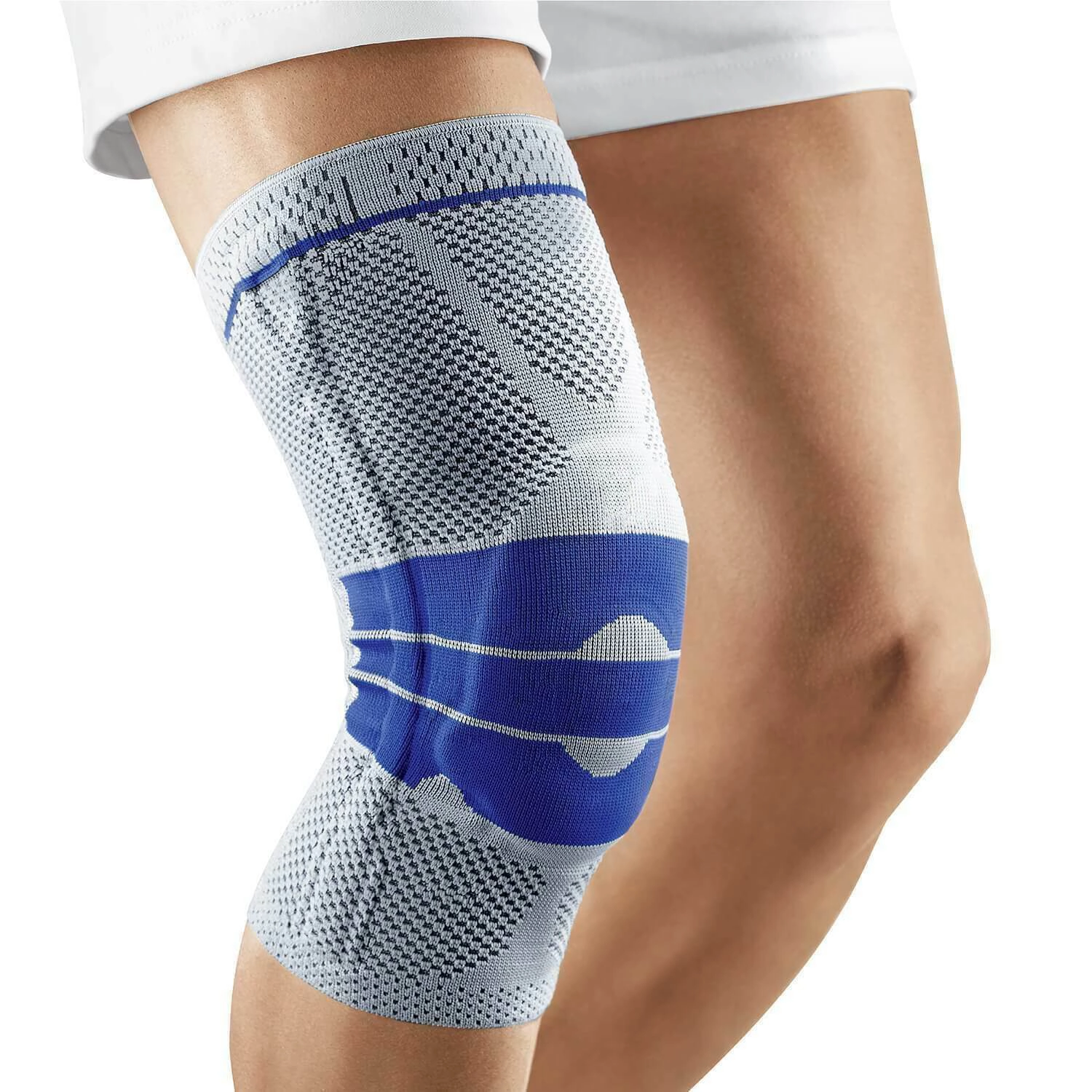

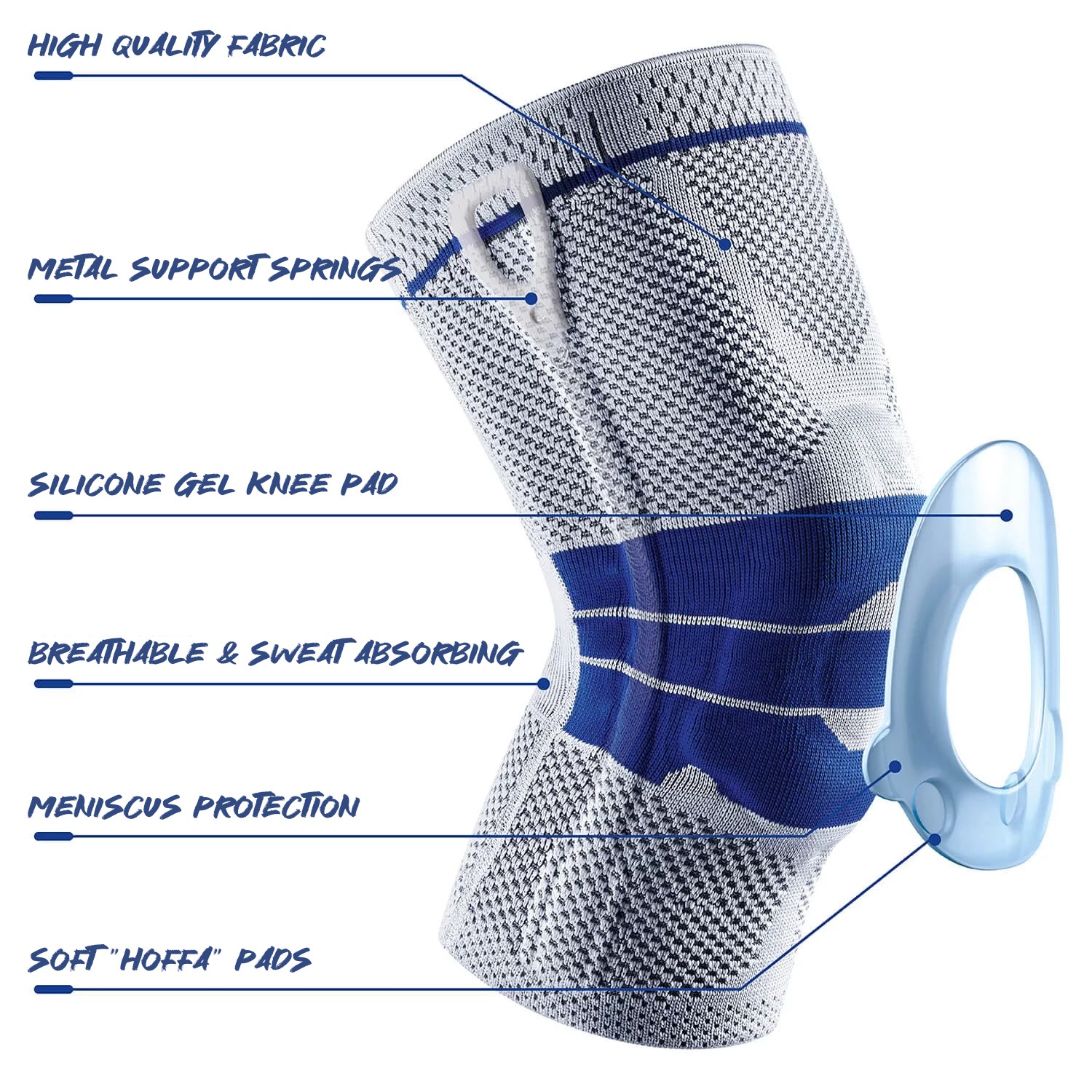
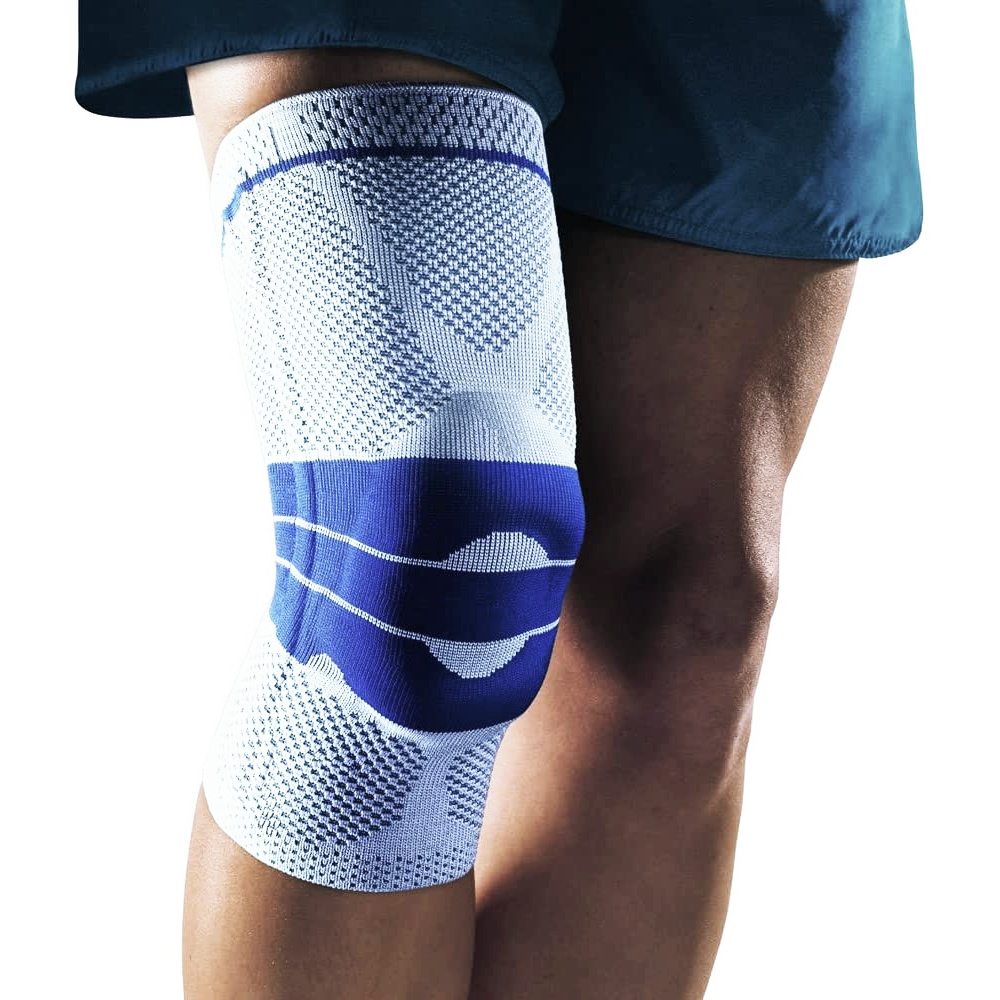
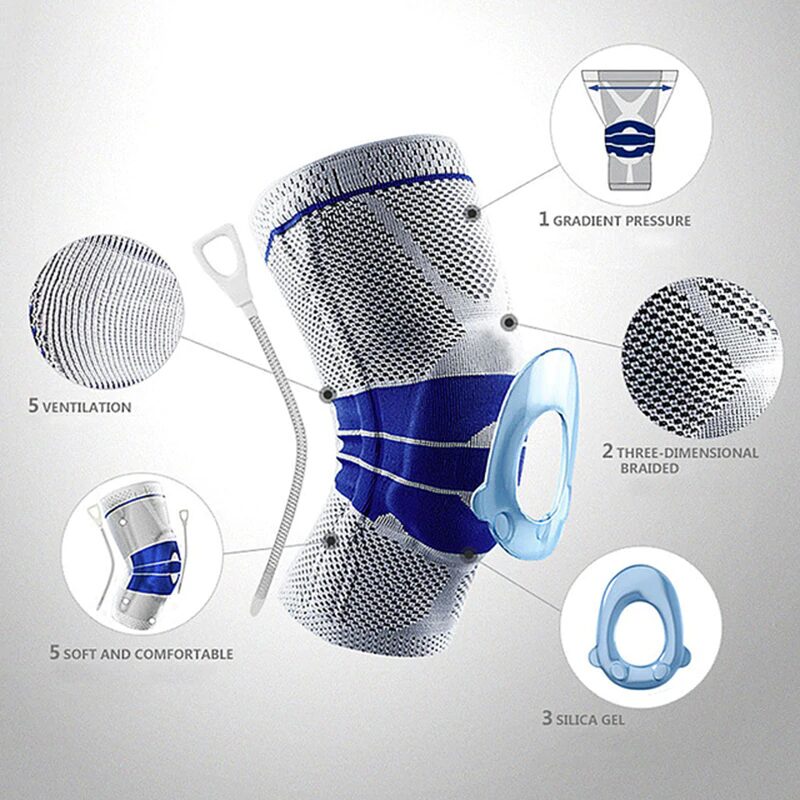
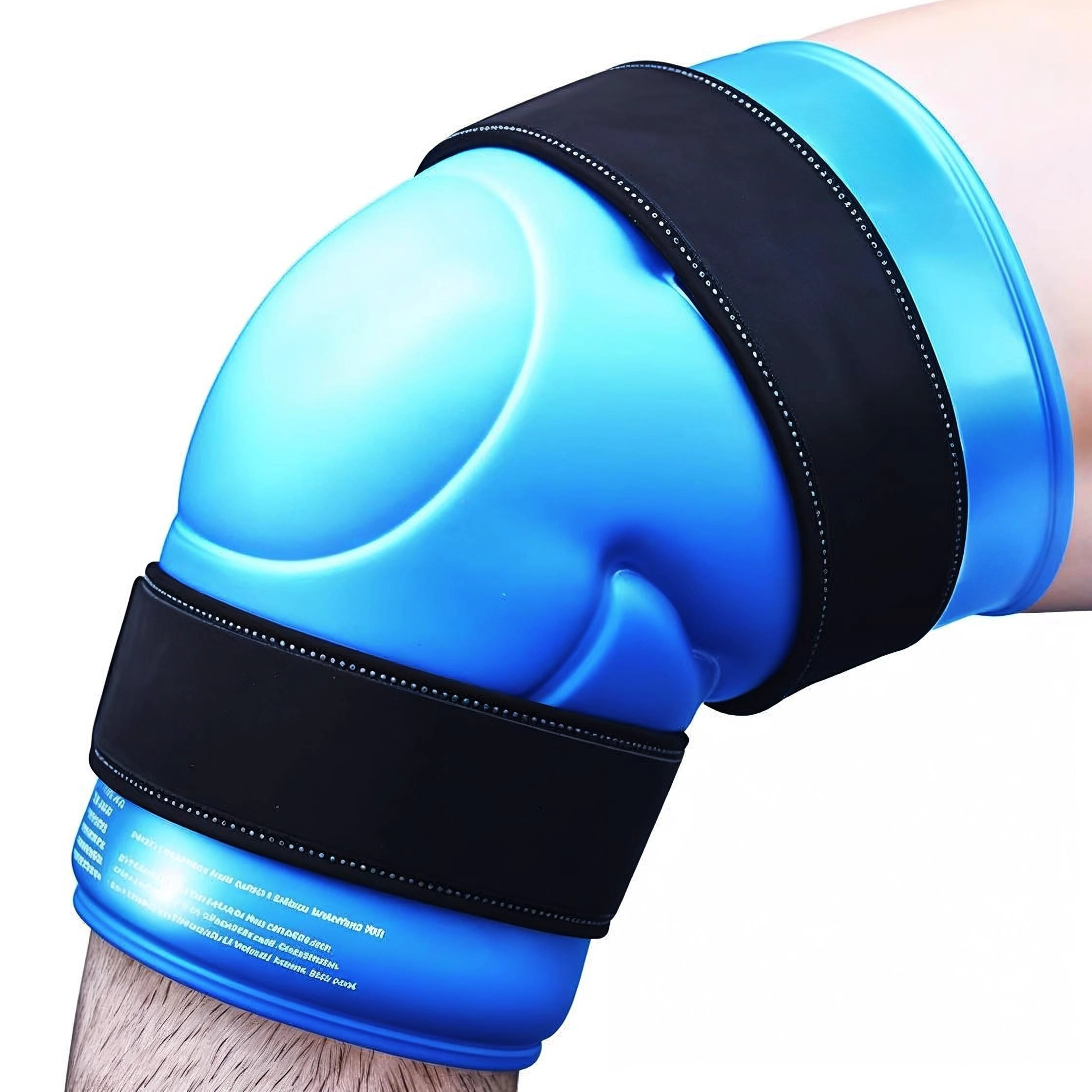
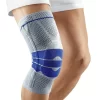
by Cain
Really great quality and value for money. Thank you!
by Adam Thompson
I recently suffered a knee injury while playing basketball. The recovery process was slow and I felt I needed extra support for my knee. So I decided to get a knee support from Nuovahealth. The 3D graduated compression technology really did wonders on my knee; I could feel the soothing effect almost immediately, which was a huge relief.
Another thing I appreciated a lot was how this knee support boosted blood flow to my knee, which helped speed up my injury recovery. The swelling and inflammation significantly reduced after a few weeks of usage! And the fact that it’s machine washable and easy to clean, was a huge bonus.
But why a 4 star, you ask? Well, though it’s a great product, I found the sizing to be a bit off for me. It took me a couple of tries before I got the desired fit. Other than that, I highly recommend it for anyone seeking knee support.
by Mike Brown
I’ve been dealing with osteoarthritis for years and recently decided to give these knee supports a try. They do a great job of easing the aches and pains, particularly after a long day on my feet. The silicone knee pad provides good support and the fabric is breathable and comfortable, making them suitable for daily wear. They have definitely made a difference, my only wish is that I’d found them sooner.
by Carl
I’ve always been an active person, you see, but a recent acl injury sidelined me for a while. That’s when I gave this Knee Support a try. Now, I’ve had my fair share of supports in my time, but this one, it’s been a lifesaver. The quality is top-notch, really sturdy. After weeks of use, it’s still as good as new. I was a bit skeptical about wearing it for the whole day, but let me tell you, it’s comfortable. It fits perfectly and doesn’t chafe. And the relief it provides! I felt a significant reduction in pain. It’s a bit pricey, but worth every penny. Slipping it on and off is a breeze. The sleek design is a bonus. Haven’t had any problems with the knee support yet, touchwood. All in all, I’d strongly recommend it to anyone in need of knee support.